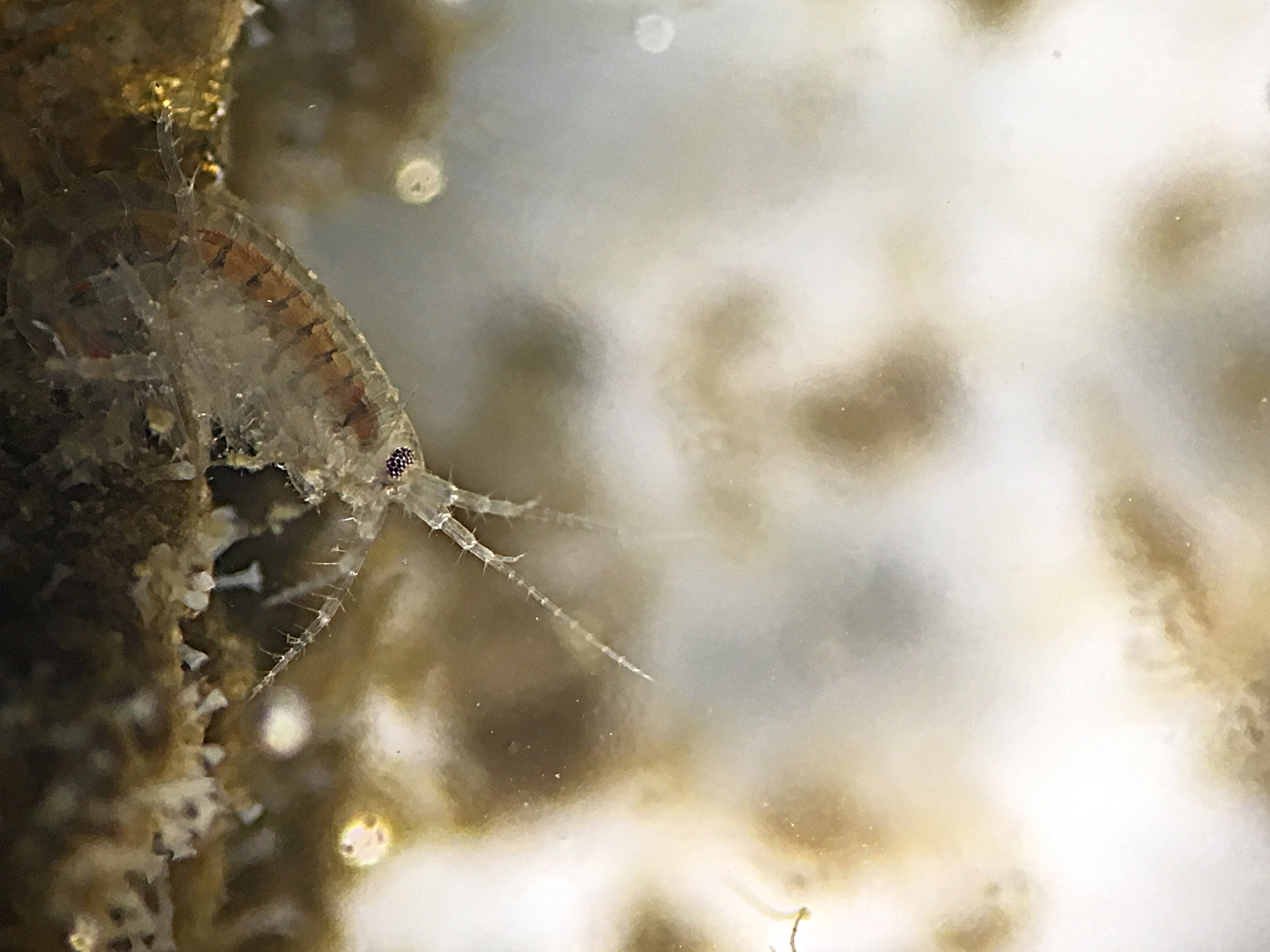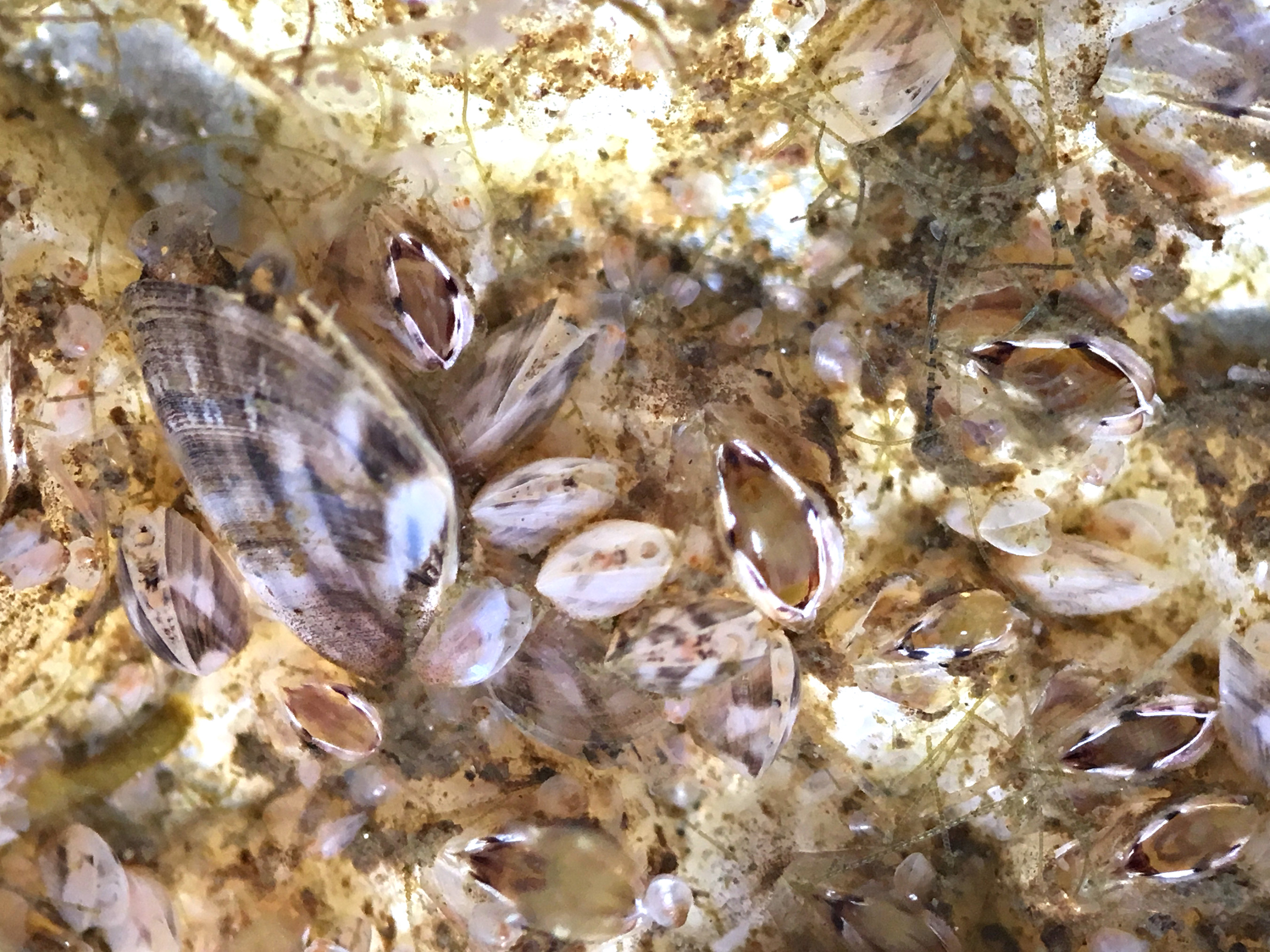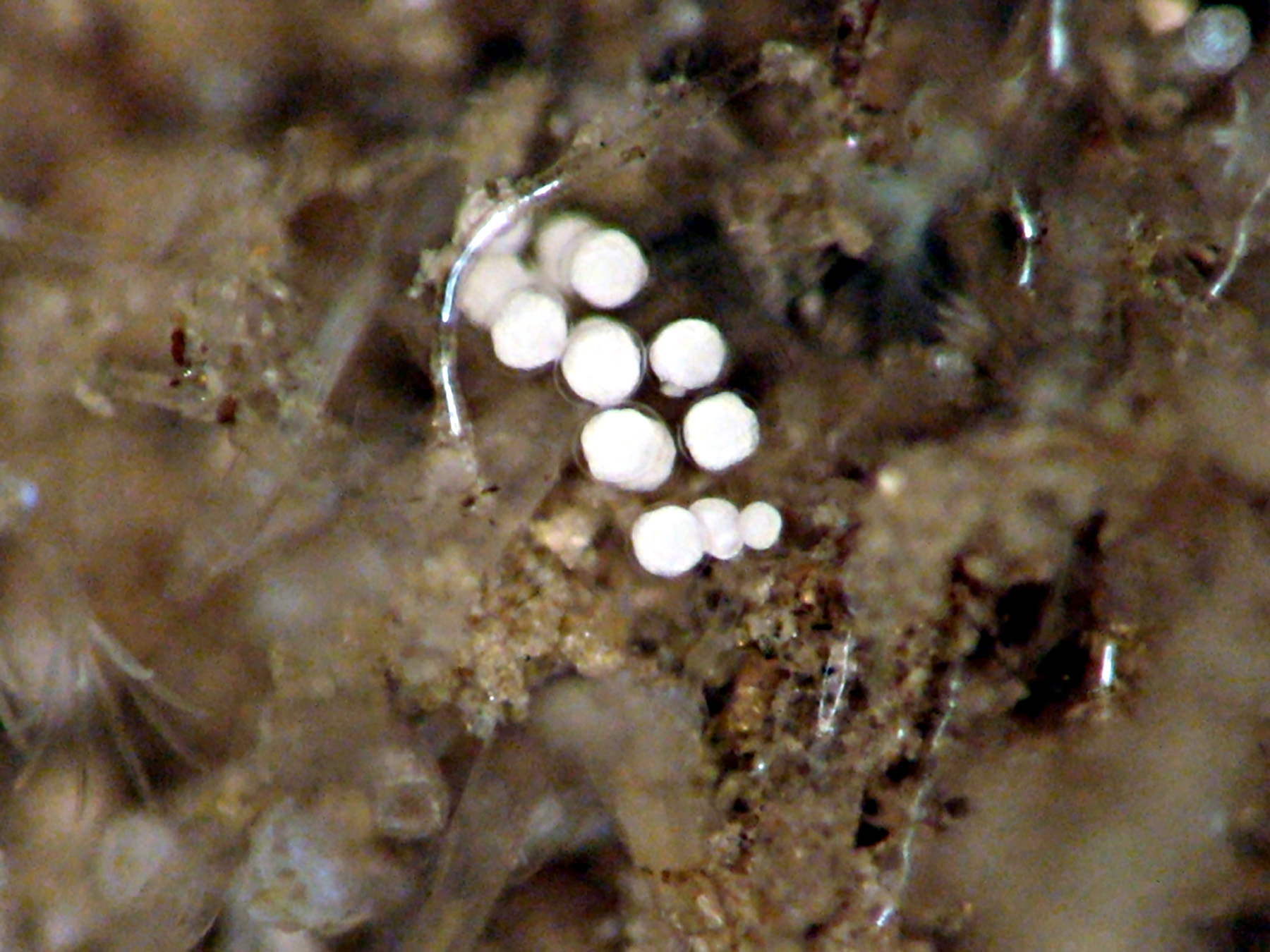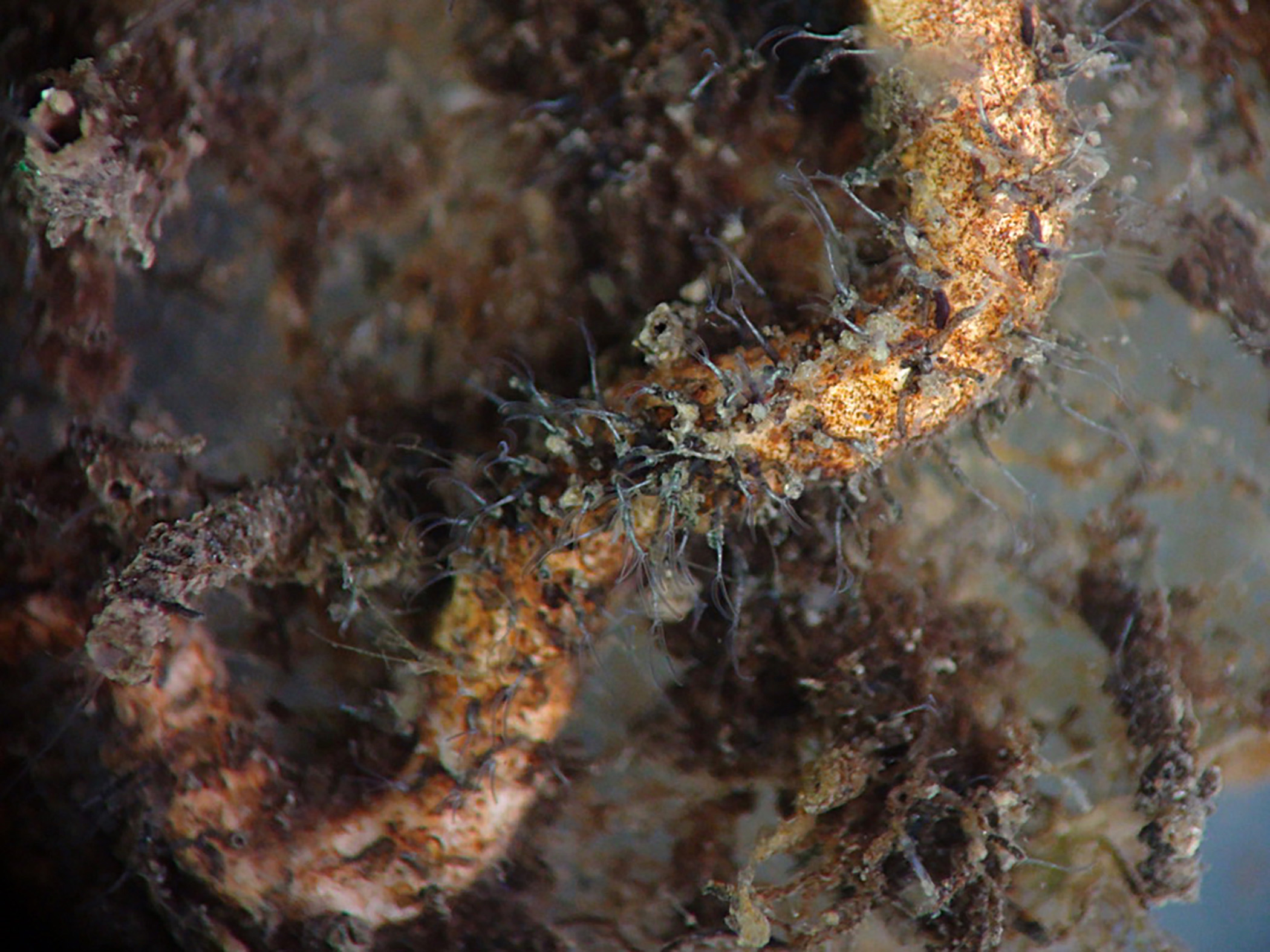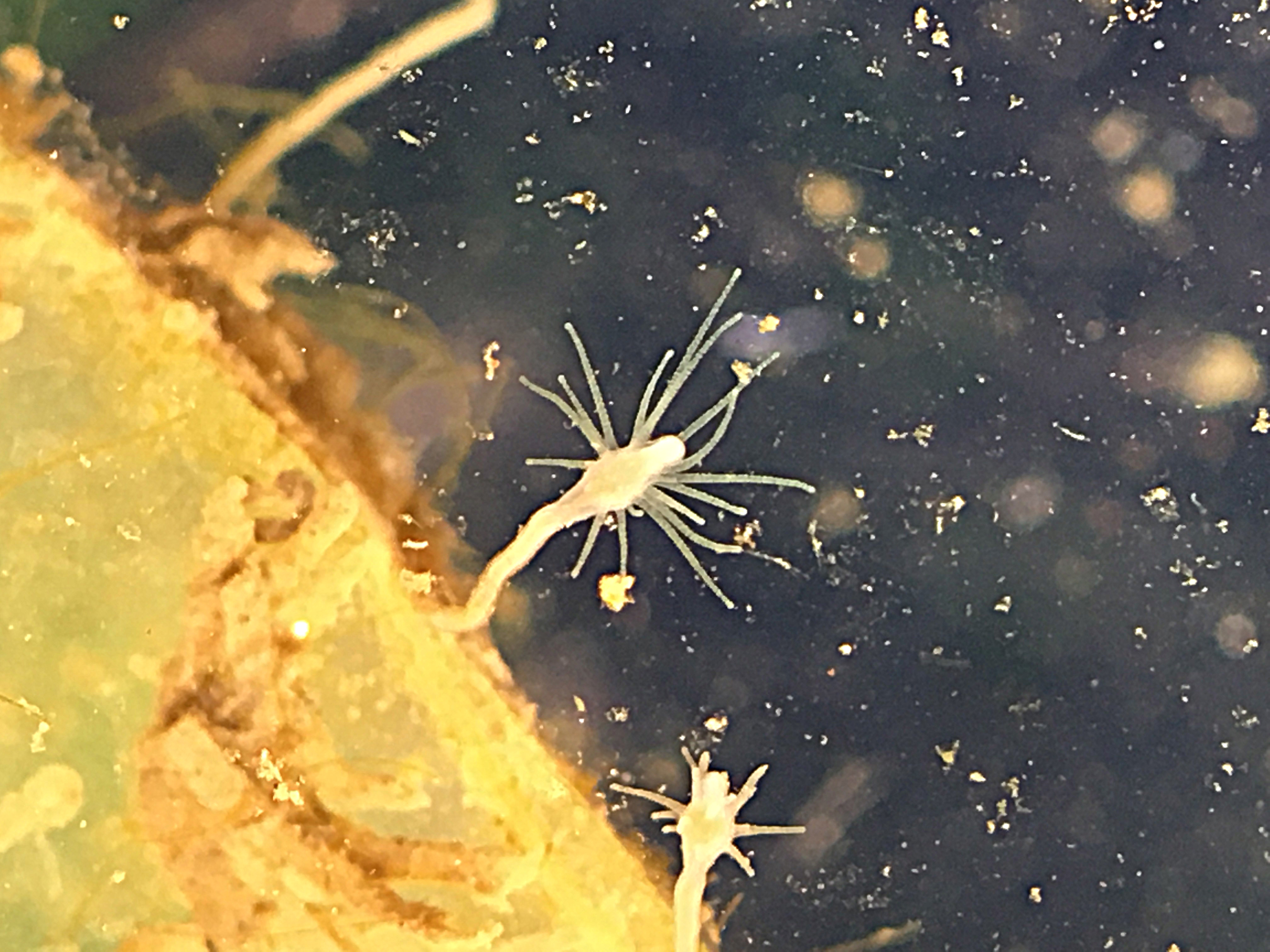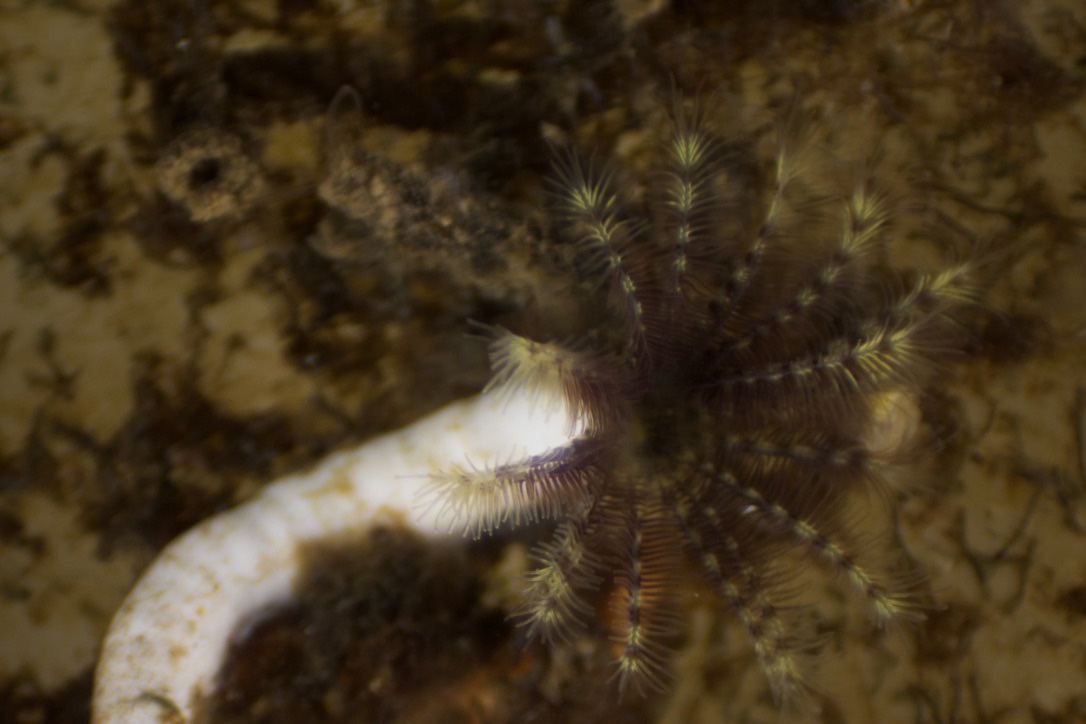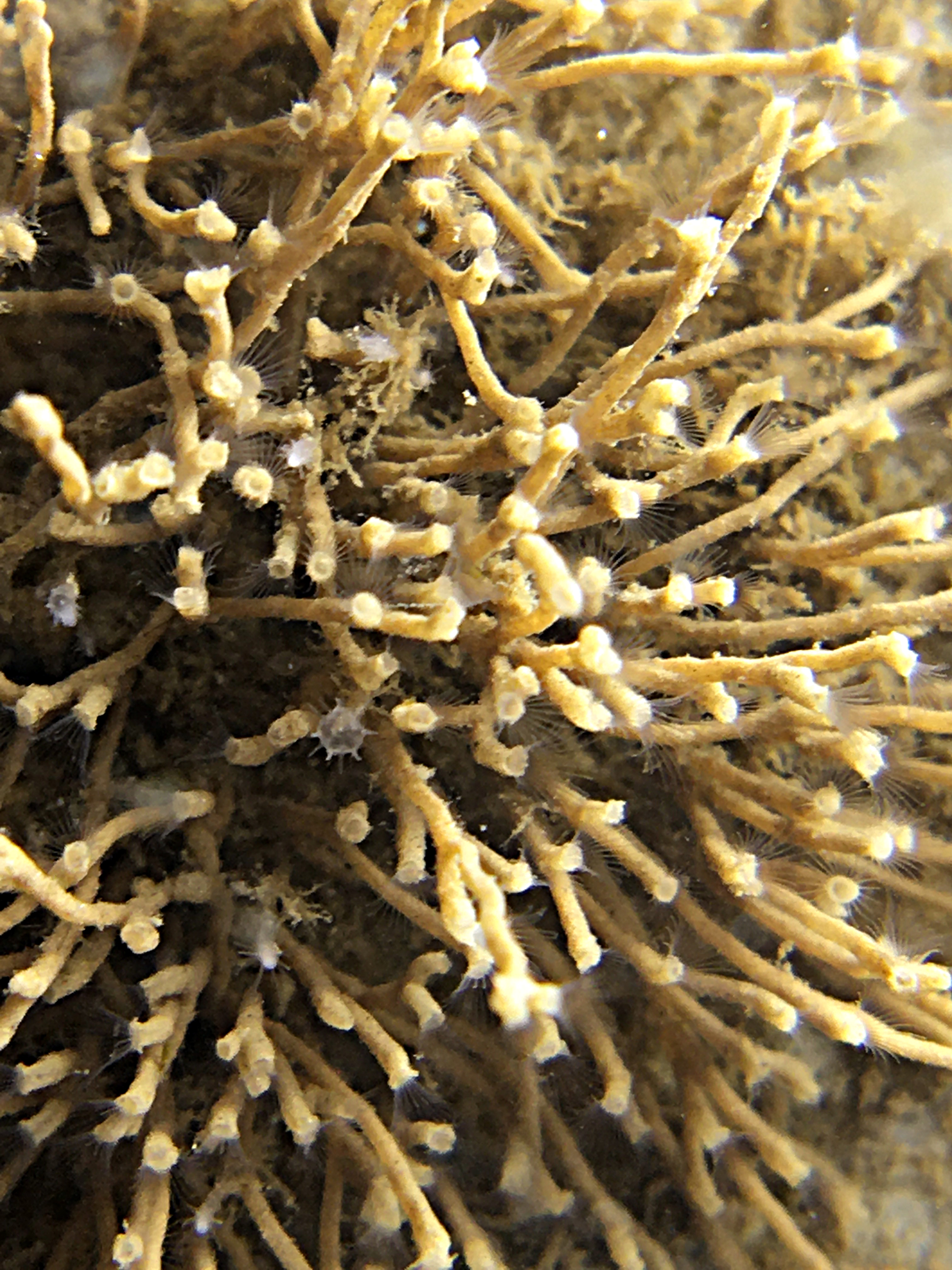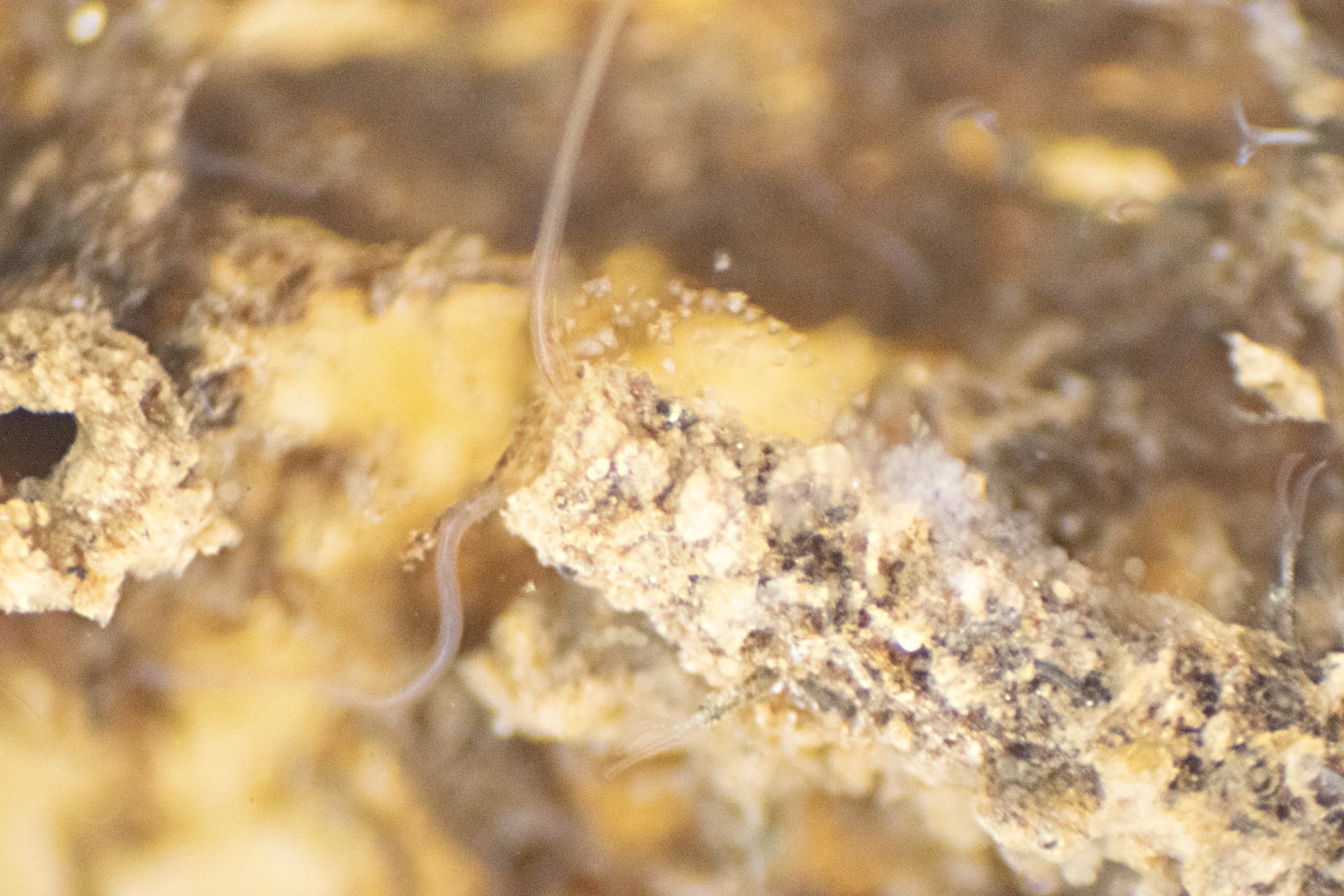Biofilms and Biodiversity Featured Creatures
The pattern of colonization on the discs in Baltimore's Inner Harbor may follow a trend similar to that of a temperate abandoned farm field. At first, there will be a great diversity of weeds, wildflowers, small seedlings, and grasses. In time, the seedlings with rapid growth will begin to take over as small shrubs and sapling trees begin to appear. These plants will compete for space more efficiently and "weed out" their neighbors. After a few seasons, the larger trees will dominate the landscape and the diversity may decline to a number of well-adapted species from the pooneering species that first emerged. This process is known as succession and occurs in many ecosystem populations.
The succession of biofilms in the Inner harbor will be more rapid, and consists of species ranging from bacteria to invertebrate animals competing for limited space during the optimal time for growth. Competition in the field is no less intense, only slower. The biofilm community on the disc will eventually become dominated by larger invertebrates--like mussels, barnacles, polychaete worms, and anemones--and limit the space of those species without the ability to compete effectively.
Gallery of Biofilm Organisms
Here are some of the organisms you may encounter in this activity. Click one of the images below to see the corresponding gallery.
Amphipod

Ampelisa spp.
Phylum: Arthropoda
Barnacle

Balanus improvisus
Phylum: Arthropoda
Barnacles are sessile but most of this class are highly mobile using their 10 legs for movement. Barnacles are filter feeders using their legs to snare plankton from the water.
Black-fingered Mud Crab

Panopeus herbstii
Phylum: Arthropoda
The black-fingered mud crab is the largest of five species of mud crabs found in the Chesapeake Bay. They have been seen on the biofilm discs as very small juveniles and are typically looking to prey upon barnacle and mussels on the discs.
Clam Worm

Neanthes succinea
Phylum: Annelida
A free-living variety of marine annelid that builds burrows and is also highly mobile outside the burrow. Many of these annelids are characterized by bristles and mobility with “leg-like” structures or parapodia.
Colonial Ciliate

Carchesium spp.
Kingdom: Protista
The most complex, single-celled organisms part of the Aveolates, which also includes Foraminifera, Apicomplexa and Dinoflagellata. The ciliates are the most diverse group with about 7,000 species.
Colonial Hydroid

Pennaria spp.
Phylum: Cnidaria
A great many hydrozoans are colonial. Some form delicate branched colonies, while others, known as "fire corals," form massive colonies that resemble true corals.
Dark False Mussel

Mytilopsis leucophaeata
Phylum: Mollusca
Sizes range from the elusive giant squid to nearly microscopic forms. Bivalves, meaning "two shells" (the name for the shells are valves). They are filter feeders. Some are sessile and some are mobile by the use of a muscular foot.
Dusky Sea Slug

Stiliger fuscatus
Phylum: Mollusca
Some are herbivorous and others are carnivorous feeding on bivalves, cnidarians, or other species. Dusky sea slugs are carnivorous sea slugs, as compared with sacoglossans which are herbivorous sea slugs. Most Chesapeake Bay species are less than half an inch long.
Entoproct
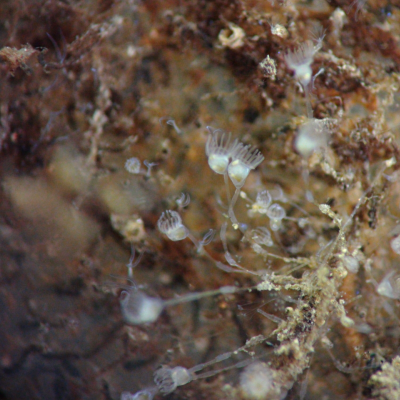
Phylum: Entoprocta
The entoprocta are a phylum of mainly marine species that are characterized by sessile life-style, a short stalk, and a goblet shaped sphere with solid tentacles. The vast majority are between 0.1 - 7mm. In the Inner Harbor they can be easily mistaken for hydroids or bryozoans.
Flatworm

Stylochus ellipticus
Phylum: Platyhelminthes
A common flatworm in Chesapeake Bay well known for preying upon barnacles and oyster “spat.”
Folliculina Protist
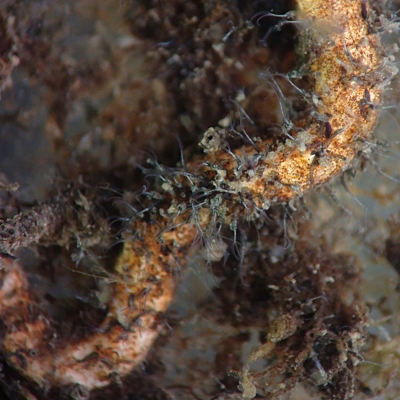
Kingdom: Protista
A ciliate with a unique looped ciliated structure emerging from a “tube” or vase-shaped structure. Colonizes on various substrates and can resemble a very small “tube worm.”
Freshwater Sponge
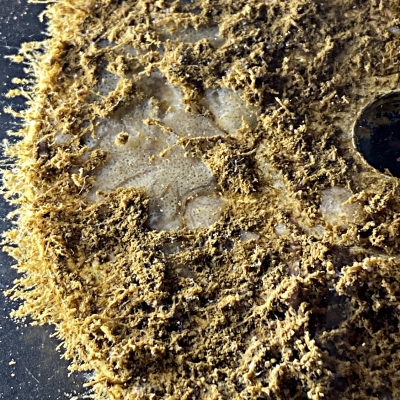
Spongilla lacustris
Phylum: Porifera
Potomac River biofilm discs. These unique animals belong to the Phylum Porifera in freshwater and are characterized by various growth forms, rough or spiny texture, white appearance, orange colored gemmules, and single slightly curved spicules.
Hydra

Phylum: Cnidaria, meaning "stinging cell." Both names have been used for this Phylum. Most familiar species tend to be jellyfish, sea anemones, and freshwater hydra.
Lacy Crust Bryozoan

Membranipora membranacea
Phylum: Bryozoa
Brozoans, meaning "moss animals," are aquatic organisms that for the most part live in colonies of interconnected individuals (from a few to many millions). The lacy crust bryozoans belong to the group Gymnolaemata, which is a marine bryozoan.
Limy Tube Worm

Phylum: Annelida
A polychaete or “bristle” worm that is recognized by the calcareous white tube that it builds on other substrates. Beautiful emerging plume for feeding. Not native to the Bay.
Stentor

Stentor spp.
Kingdom: Protista
Phylum: Ciliophora, meaning "ciliated protozoan"
This is a protist and not an animal. It is among the largest single-celled organisms on Earth.
Tube Bryozoan
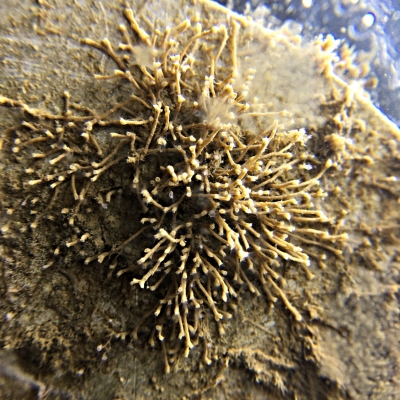
Victorella pavida
Phylum: Bryozoa, meaning "moss animals," are aquatic organisms living, for the most part, in colonies of interconnected individuals (from a few to many millions). The bryozoan pictured here belongs to the group Gymnolaemata, which is a marine bryozoan.
Whip Mud Worm
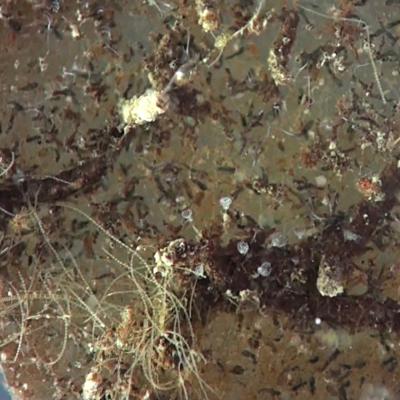
Polydora cornuta
Phylum: Annelida, consists mostly of marine species found worldwide. Each has characteristic bristles covering or lining the exterior of the body.
Mud worms build a burrow in which they live. They use their two tentacles to snare food that is floating by and transport it along cilia to their mouth, like a conveyor belt.
White Anemone

Diadumene leucolena
Phylum: Cnidaria, meaning "stinging nettle" (from the Greek "cnidos").
The white anemone is typical of other anemone species with tentacles surrounding a central “mouth” for ingestion and excretion.
There is one species of coral in the Chesapeake Bay, known as the whip coral.
